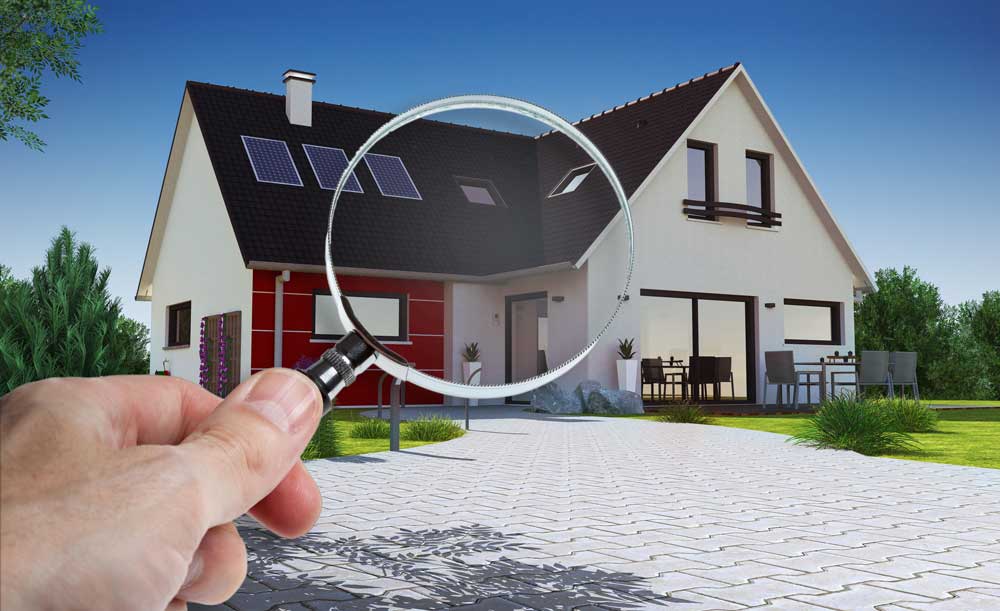What to Expect During a Roof Inspection
Published: 09/17/2021
Whether you’re the owner of a business facility or a private residence, you’ll want to have a clear picture of your building’s condition before you invest in any work. This is especially true for roofing projects, which can carry quite hefty price tags.
Getting a roof inspection done will give you a full grasp of any roofing problems you currently have or are likely to develop in the future. It will also help contractors figure out the best way of going about any roofing work, thus allowing them to give more accurate estimates on completion time and price. But what exactly can you expect during a roof inspection? How should you prepare, and what will take place on the day of? To help you get ready, we’ll give you a full rundown of all the basics when it comes to both commercial and residential roof inspections.

How long does a roof inspection take?
This answer varies depending on the size of your rooftop and the complexity of the structures present. Small and simple roofs can take as little as 30 minutes to fully inspect. You can expect one or two hours, possibly more, for large commercial facilities or expansive homes with many gables, dormers, and other architectural features.
Inspecting the Roof’s Exterior
The surface of your roof will be accessed and inspected for any signs of damage. Your inspector will check the condition of the roofing materials, noting whether components like shingles are missing or decomposing. They will look for any holes, cracks, or sagging, as well as any damage to flashing, soffits, fascia boards, drains, gutters, or chimneys and vents. Note will be made of any loose nails or other fastening elements.
In some cases, exterior inspections can be done via drone, and won’t require anyone physically accessing your rooftop.
Inspecting the Roof’s Interior
This is the phase where the roof’s “undercarriage” will be assessed for structural problems. Access to the attic area will need to be granted so that the inspector can look at the roof decking, insulation, and other materials.
It’s at this point where inspectors can determine whether or not any trusses, rafters, struts, or other supportive structures are cracked, bowed, or rotted. Your insulation’s R-value will also need to be checked, as well as any signs of mold, excess moisture, or poor ventilation.
Commercial vs. Residential Roof Inspections
How do commercial roof inspections diverge from those done for private homes? There are a few points at which commercial inspections can require extra work.
Equipment Site Checks
Because the rooftops of business facilities commonly house equipment ranging from A/C systems to water tanks, they need extra attention paid to the surrounding roofing areas.
Not only can the weight and wind-stress of equipment cause damage to the parts of the roof they are in contact with, leaks and condensation can also introduce cracks and rotting. These risks mean that if you have a commercial rooftop, you can expect that a professional inspector will devote additional time to checking the spots where equipment has been installed.
Core Sampling
Another step almost exclusive to commercial roof inspections is core sampling. Commercial rooftops are typically flat surfaces that are composed of different layers. Sometimes, when a new roof is needed, it can be installed right over the old layer, provided certain conditions are met.
Over the years and after switching owners, it can be easy to lose track of how many roofing layers exist. You will need to verify how many layers are present to determine whether or not you can add on another, or if a full strip-down and rebuild is required. Florida’s building code only permits two roofing layers.
The number of layers present can easily be determined by taking a core sample of the rooftop. This requires drilling down to the roof decking and removing a vertical cross section composed of every layer of material. Such a sample will reveal what and how many materials have been used, how they are structured, and what might be the cause of any current defects. It can also help detect corrosion, mold, and even asbestos.
Issuing the Report
Both residential and commercial roof inspections conclude with a formal report detailing the roof’s condition and what issues may be present. It should go over recommended repairs, and a plan of attack for executing a new installation (if applicable).
Inspection reports will usually include at least rough cost estimates for the work options proposed. The company that performed your inspection should give you cost-effective solutions for any problems you are experiencing, and account for any preferences you expressed during the consultation.
Get Your Free Roof Inspection & Quote
AKVM’s roofing pros are here to give you expert insights into how your roofing problems can be solved. We have repaired and built top quality roofs for both residential and commercial customers throughout Florida’s Sarasota, Manatee, and Hillsborough counties.
Contact us today to schedule your free roof inspection - call us at (941) 727-3996.
REQUEST A
FREE ESTIMATE

See What Our Customers Are Saying
Recent Posts
Choosing A Multi-residential Roofer
Choosing The Best Roofer
Energy Efficient Roofing Solutions
How Long Does It Take To Replace A Roof?
Debunking 10 Common Roofing Myths
2025 Roofing Tech & Trends
How To Choose Color For Tile Roof
What Is Drip Edge?
What Do Roof Vents & Penetrations Do?
How Roofs Impact Market Value
Best Roof for Florida
Maximizing Energy Efficiency
Roof Inspections 2024
Prepare Your Roof For Spring
Lifespan of Different Roofing Materials
How Roof Type Affects Value
Choosing Materials for Extreme Weather
Guide to Cleaning Gutters Safely
Emergency Roof Repair: What to do until the professionals arrive
New Roof Tech: GAF Solar Energy Shingles
How to Minimize Fire Hazards on Roof
How Florida Heat Affects Roof
Top Benefits of Shingle Roofs
Solar Options for Florida Homes
What to do if Hurricane Damages Roof
2023 Hurricane Season Roof Preparation Checklist
Does Adding Solar Increase Your Home's Value?
What it takes to be a GAF Master Elite Contractor
How To Choose The Right Roof Shingles
How To Choose The Right Windows & Doors For Your Home
How To Choose Solar Energy System For Your Home
What To Do If Tree Falls On Your Roof
Residential Roof Spring Cleaning Checklist
Should You Replace Your Gutters When You Replace Your Roof?
New Homeowners' Guide To Roof
Roof Warranties
2023 Solar Energy Trends
Time To Replace Front Door
Roofs With Curb Appeal
Roof is Leaking During Storm
New Roof vs. Repair